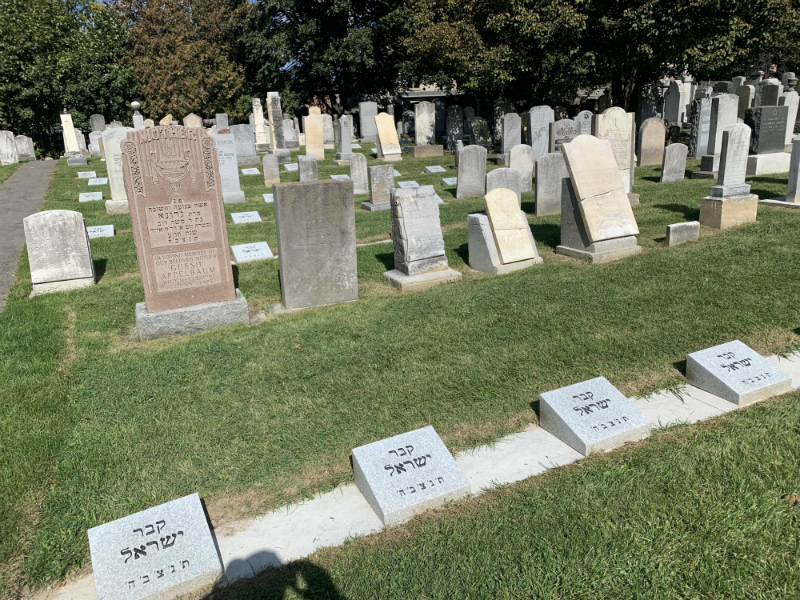Section 9 of Toronto’s Roselawn Cemetery is forgotten no more.
Gravestones have been righted, the brush cut away, the ground levelled and rubble hauled away.
The section that once fell into disrepair for years will finally be rededicated this month.
Communal leaders, rabbis and loved ones will gather at the newly restored “Hebrew Free Burial Society” section for the rededication service on Oct. 25 at 9:30 a.m.
The small rectangular section, on the north side of Roselawn Avenue, is owned and administered by UJA Federation of Greater Toronto (and was owned by its predecessor organizations, as well). It’s been in use since the early 1900s.
Officials believe that it was most likely the community cemetery for people who weren’t members of a synagogue or fraternal group.
The CJN first reported on conditions in the section in 2017 and found it was the most damaged among Toronto’s Jewish cemeteries. Cracked, crooked, toppled and smashed headstones; names on markers that had faded into obscurity; graves hidden in thickets of bushes and branches; and piles of rubble and heaving ground all spoke to years of neglect.
Officials conceded that it had simply fallen between the cracks – a startling state of affairs given that UJA Federation raises millions of dollars every year.
The organization undertook a major restoration beginning in the spring of 2018 and the results are dramatic.
The entranceway stairs, railings and the section’s name in black iron are all new. Every stone that could be matched to a specific grave was repaired, and each damaged grave represented a custom repair job, explained David Sadowski, who oversees all UJA Federation properties in and around Toronto.
In all, just over 500 people are buried in the section. A total of 205 headstones were repaired. Some received new foundations, while those that had no foundations are now propped against cement supports.
READ: CANADIANS THANKFUL FOR GROUP CLEARING HUNGARIAN CEMETERY
Trees and brush were cut back to reveal rows of graves. Headstones have been cleaned, though the writing on some of them can no longer be deciphered.
A few tombstones date to the early 20th century and it’s thought that some remains are of those who died in the 1918 Spanish flu epidemic, which claimed 1,750 lives in Toronto.
Tiny headstones denote the graves of children.
It was painstaking, backbreaking work all done by hand, as the space is too tight for heavy machinery, Sadowski noted.
The most positive aspect of the restoration, he added, is that now, every body in the section has a marker. Some years ago, a ground-penetrating radar study of the section revealed that many bodies were in unmarked graves.
The 166 unnamed dead are now memorialized with small, ground-level “pillow” markers engraved with the Hebrew words, “Kever Yisra’el” (roughly, “Jewish grave”).
Three local rabbis, one from each major tradition – Chaim Strauchler of Shaarei Shomayim Congregation, Baruch Frydman-Kohl of Beth Tzedec Congregation, and Yael Splansky of Holy Blossom Temple – were consulted on the religious aspects of repairing the graves. All three are slated to speak at the rededication service.
The total cost of the restoration was about $250,000, which came from UJA bequests.
There’s one curious aspect to the section, Sadowski pointed out. It seems to be the only section in any Toronto Jewish cemetery where headstones are aligned on an east-west axis, and bodies are positioned north-south.
In any event, he called this project a labour of love.
“We did everything to honour the legacy of the people buried here,” said Steven Shulman, senior vice-president of corporate affairs and community relations at UJA Federation. “Basically, we treated this as family.”
